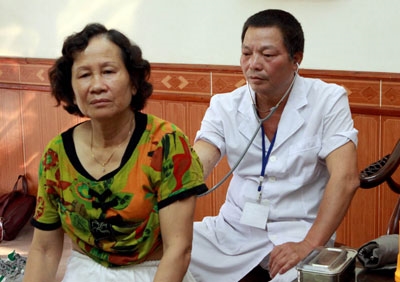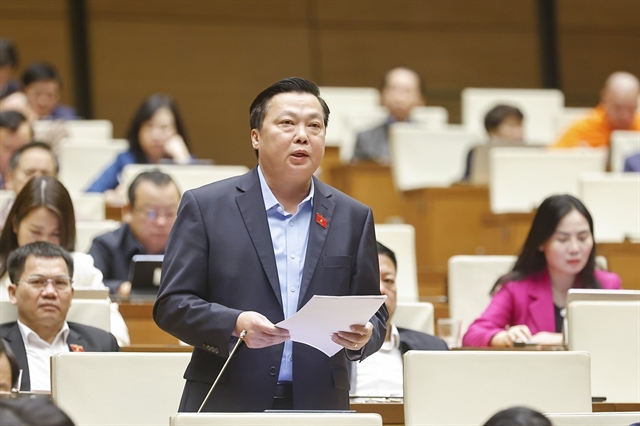 Society
Society

The Ministry of Health plans to expand the family doctor model to 80 per cent of provinces and cities nationwide by 2020, participants heard at an online conference yesterday.
 |
| A doctor does a health checkup following the family doctor model for a resident of Dục Tú Commune, Đông Anh District, Hà Nội. — Photo danviet.vn |
HÀ NỘI — The Ministry of Health plans to expand the family doctor model to 80 per cent of provinces and cities nationwide by 2020, participants heard at an online conference yesterday.
"Priority will be given to establishing the family doctor model at the grass-roots level, including in commune health clinics offering family medicine, private family-doctor clinics and family-doctor clinics operating under State-owned general hospitals," Health Minister Nguyễn Thị Kim Tiến said at the event.
“The model will provide continuous basic healthcare services to families, individuals and the community in an effort to improve the quality of primary healthcare and to reduce hospital congestion,” Tiến said.
She said the model had faced several challenges due to a shortage of funding sources and human resources specialised in family medicine. There are still only a few private family-doctor clinics available as the model has not attracted investment from the private sector.
Many people still do not know much about the model and the role of a family doctor in providing primary healthcare for the community.
Speaking at the event, Deputy Prime Minister Vũ Đức Đam said the health sector should strengthen the capacity of primary healthcare, including health exams, treatment, consultations and preventive medicine, at health clinics in mountainous, remote, border and island areas.
Đam also asked the health ministry to develop the healthcare system at the grass-roots level along with the family doctor model and propose financial resources and priorities for the expansion of the country’s grass-roots healthcare system.
At the event, participants agreed that the family doctor model should be integrated with the country’s 14,000 commune health clinic system.
The health sector suggested that provinces and cities should pay more attention and call for further investment in expanding the family doctor model based on their existing commune health clinic system.
Provincial health departments have been requested to study the status of commune health clinics and local demand to develop a strategy for expanding the model in their localities.
Medical universities have also been asked to increase the number of training courses offered on family-doctor medicine. The community should have greater awareness of the family doctor model and its benefits to encourage people to use the services of family doctors.
Statistics from the health ministry showed that 336 family-doctor clinics, including six private clinics, have been established in six provinces and cities nation-wide by June 2016. They provide basic healthcare services, including services covered by the health insurance fund.
Three years after rolling out the family doctor plan, family-doctor clinics have shown remarkable results in providing services related to health exams and treatment, rehabilitation and patient management for people and families in the community.
Some clinics, such as the Thành Công Private Clinic and the Family Doctor Clinic at the District 2 Hospital in HCM City, have received positive feedback from patients and health managers in the application of e-medical records and clinic management software and the regular provision of online consultations. — VNS




